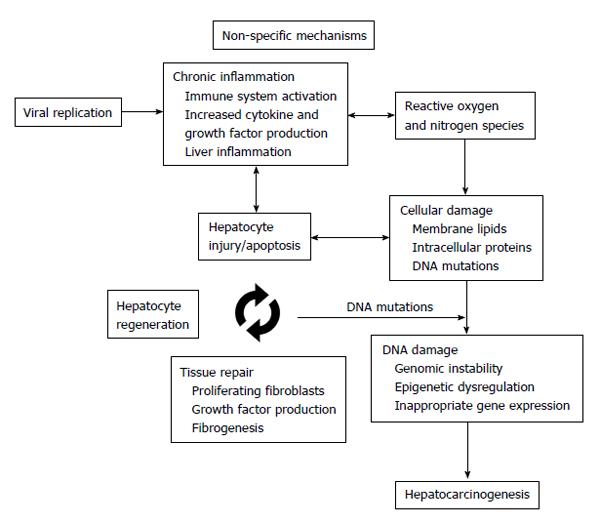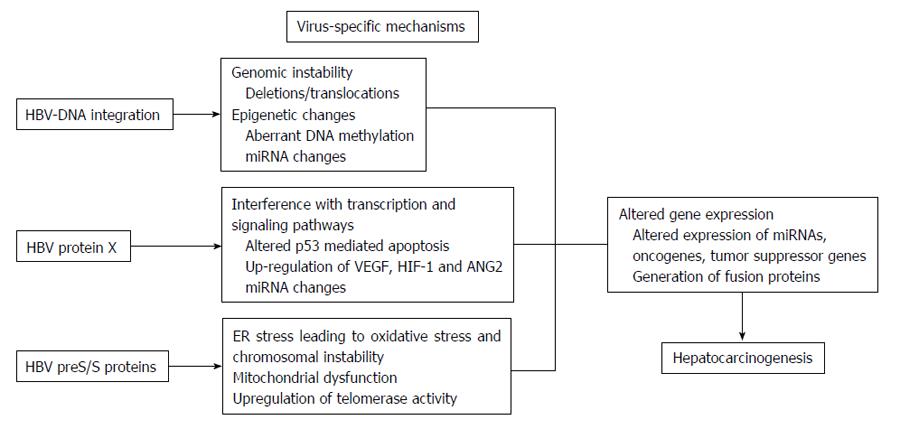Copyright
©The Author(s) 2015.
World J Hepatol. Jul 8, 2015; 7(13): 1742-1754
Published online Jul 8, 2015. doi: 10.4254/wjh.v7.i13.1742
Published online Jul 8, 2015. doi: 10.4254/wjh.v7.i13.1742
Figure 1 Chronic inflammation in the liver is characterized by sustained damage leading to hepatocyte death/regeneration and tissue repair cycle.
Activation of inflammatory signaling with increased cytokine and growth factor production leads to oxidative stress which contributes to cellular damage. Cumulative damage to cellular structures, proteins and chromosomes alters genomic and epigenomic functions which can eventually induce hepatocarcinogenesis.
Figure 2 Hepatitis B virus has unique virus-specific mechanisms to induce carcinogenesis in the liver.
The integration of hepatitis B virus (HBV)-DNA into the host genome alters DNA expression by gene and/or chromosomal deletions/translocations, and epigenetic changes (aberrant DNA methylation, miRNA changes). Viral protein HBV protein X may cause interference with transcription and signaling pathways leading to altered p53 mediated apoptosis and angiogenesis by up-regulation of vascular endothelial growth factor (VEGF), hypoxia inducible factor-1 (HIF-1) and angiopoietin-2 (ANG2). HBV preS/S proteins cause endoplasmic reticulum stress and mitochondrial dysfunction leading to oxidative stress.
- Citation: Baran B. Nucleos(t)ide analogs in the prevention of hepatitis B virus related hepatocellular carcinoma. World J Hepatol 2015; 7(13): 1742-1754
- URL: https://www.wjgnet.com/1948-5182/full/v7/i13/1742.htm
- DOI: https://dx.doi.org/10.4254/wjh.v7.i13.1742










